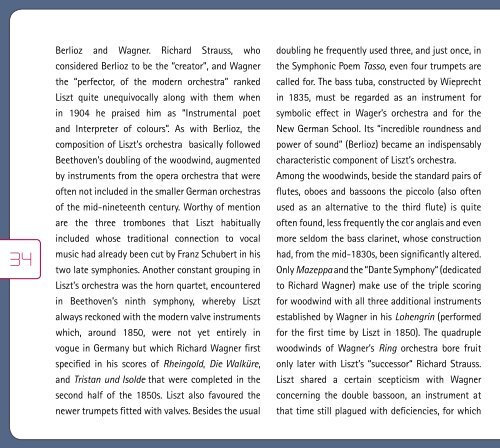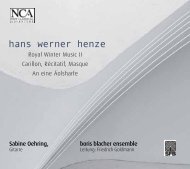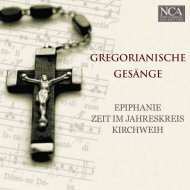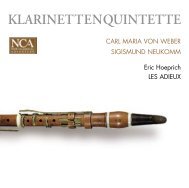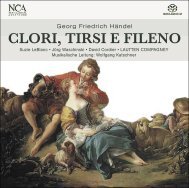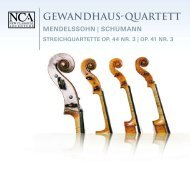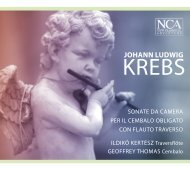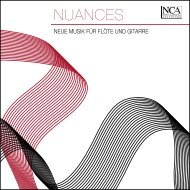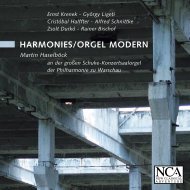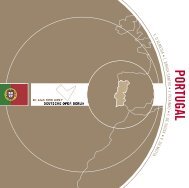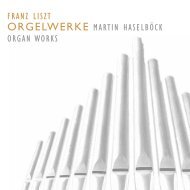FRANZ LISZT - nca - new classical adventure
FRANZ LISZT - nca - new classical adventure
FRANZ LISZT - nca - new classical adventure
You also want an ePaper? Increase the reach of your titles
YUMPU automatically turns print PDFs into web optimized ePapers that Google loves.
Berlioz and Wagner. Richard Strauss, who<br />
considered Berlioz to be the “creator”, and Wagner<br />
the “perfector, of the modern orchestra” ranked<br />
Liszt quite unequivocally along with them when<br />
in 1904 he praised him as “Instrumental poet<br />
and Interpreter of colours”. As with Berlioz, the<br />
composition of Liszt’s orchestra basically followed<br />
Beethoven’s doubling of the woodwind, augmented<br />
by instruments from the opera orchestra that were<br />
often not included in the smaller German orchestras<br />
of the mid-nineteenth century. Worthy of mention<br />
are the three trombones that Liszt habitually<br />
included whose traditional connection to vocal<br />
music had already been cut by Franz Schubert in his<br />
34 35<br />
two late symphonies. Another constant grouping in<br />
Liszt’s orchestra was the horn quartet, encountered<br />
in Beethoven’s ninth symphony, whereby Liszt<br />
always reckoned with the modern valve instruments<br />
which, around 1850, were not yet entirely in<br />
vogue in Germany but which Richard Wagner first<br />
specified in his scores of Rheingold, Die Walküre,<br />
and Tristan und Isolde that were completed in the<br />
second half of the 1850s. Liszt also favoured the<br />
<strong>new</strong>er trumpets fitted with valves. Besides the usual<br />
doubling he frequently used three, and just once, in<br />
the Symphonic Poem Tasso, even four trumpets are<br />
called for. The bass tuba, constructed by Wieprecht<br />
in 1835, must be regarded as an instrument for<br />
symbolic effect in Wager’s orchestra and for the<br />
New German School. Its “incredible roundness and<br />
power of sound” (Berlioz) became an indispensably<br />
characteristic component of Liszt’s orchestra.<br />
Among the woodwinds, beside the standard pairs of<br />
flutes, oboes and bassoons the piccolo (also often<br />
used as an alternative to the third flute) is quite<br />
often found, less frequently the cor anglais and even<br />
more seldom the bass clarinet, whose construction<br />
had, from the mid-1830s, been significantly altered.<br />
Only Mazeppa and the “Dante Symphony“ (dedicated<br />
to Richard Wagner) make use of the triple scoring<br />
for woodwind with all three additional instruments<br />
established by Wagner in his Lohengrin (performed<br />
for the first time by Liszt in 1850). The quadruple<br />
woodwinds of Wagner’s Ring orchestra bore fruit<br />
only later with Liszt’s “successor“ Richard Strauss.<br />
Liszt shared a certain scepticism with Wagner<br />
concerning the double bassoon, an instrument at<br />
that time still plagued with deficiencies, for which<br />
reason he never specified it (Mazeppa alone is<br />
scored for a third bassoon). On the other hand he<br />
set great store by the harp, adopted from the opera<br />
orchestra, and which according to Berlioz, must<br />
have suffered a “sore and quite barbaric neglect”.<br />
Also favoured was an extended percussion section in<br />
which cymbals, triangle and bass drum appear most<br />
often, and sometimes a side drum, tam-tam and<br />
bells. Among the symphonic poems only Orpheus,<br />
Prometheus, and Hamlet are limited to the tympani,<br />
wherein Berlioz’s influence can most clearly be seen.<br />
This conclusion is supported not only by the use of<br />
a greater number of instruments (2-4) and several<br />
players (as in the “Dante Symphony”) but also by<br />
the exact instructions for playing, for instance the<br />
specification of the types of drumsticks.<br />
The way in which the poetical programme can<br />
be made perceptible to the senses can best be<br />
studied using the example of Liszt’s “Dante<br />
Symphony” that received its premiere in 1857 in<br />
Dresden. Programmatic are the sharp contrasts,<br />
worked out in the Inferno section, between the<br />
dark orchestral tutti controlled by the brass, and<br />
the passages dominated by bass clarinet and<br />
cor anglais solos. The sound of the cor anglais is<br />
poignantly associated for Liszt (as for Berlioz and<br />
Wagner) with a more beautiful past, harp glissandi<br />
symbolise “the ghostly forms of the unfortunate<br />
Francesca da Rimini and her lover rising from<br />
the inferno” (Richard Strauss). Also in the<br />
succeeding love scene and process of sublimation<br />
in the Purgatorio, giving a glimpse of Paradise,<br />
Liszt imparts a remarkably vivid impression and<br />
dramaturgical power of conviction, particularly in<br />
his extremely varied treatment of the woodwinds<br />
and divided strings.<br />
<strong>FRANZ</strong> <strong>LISZT</strong> (1811-1886)<br />
Klaus Aringer<br />
“Dante” Symphony, for women’s chorus and<br />
orchestra<br />
Inferno<br />
Purgatorio – Magnificat<br />
The epic poem La Divina commedia (“The Divine<br />
comedy”) by the Florentine poet and philosopher<br />
english


